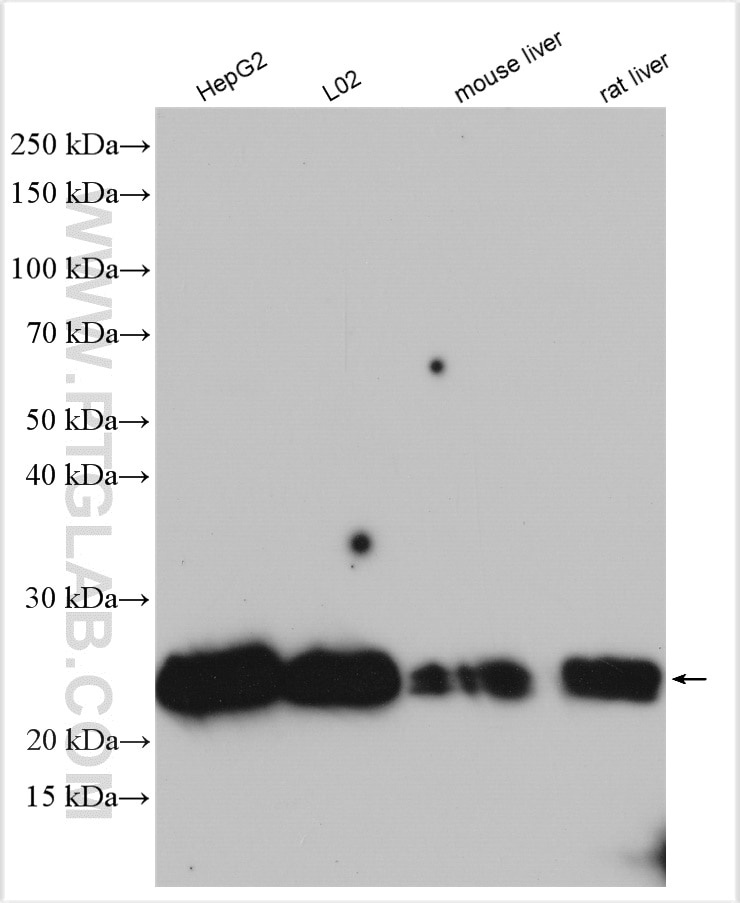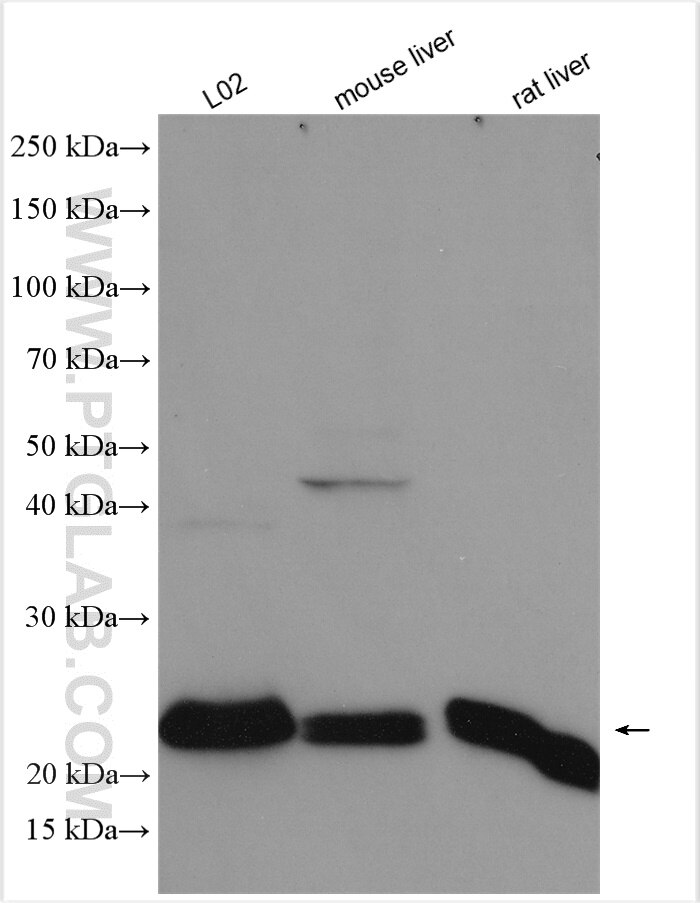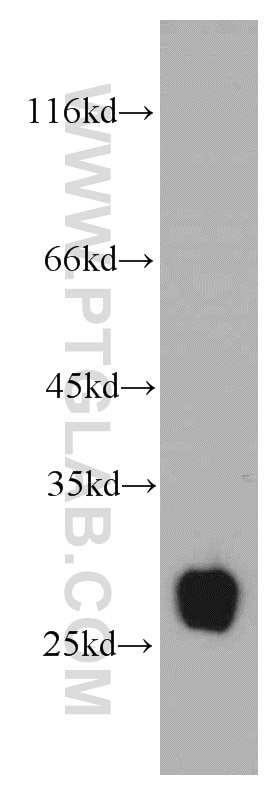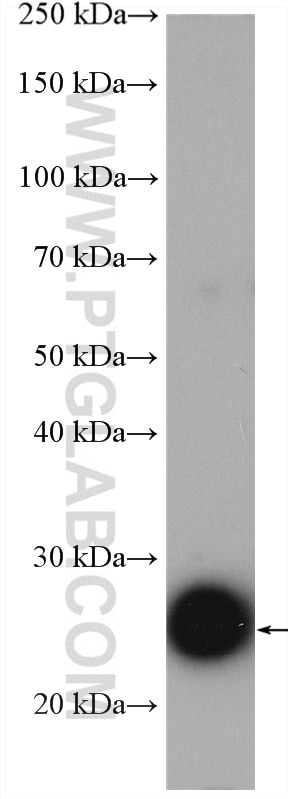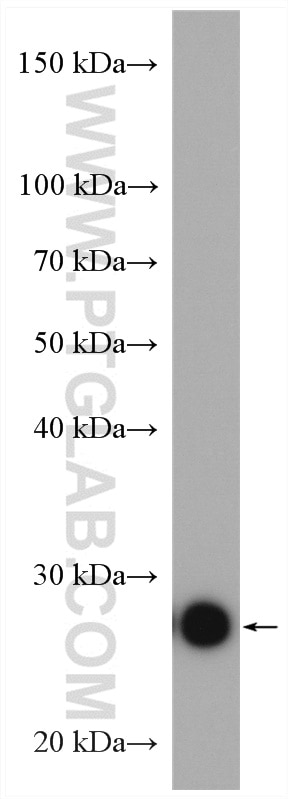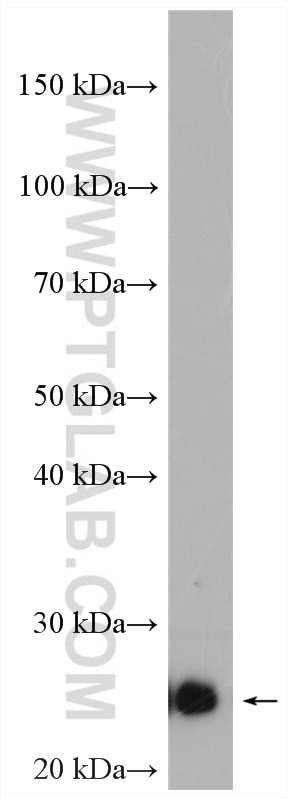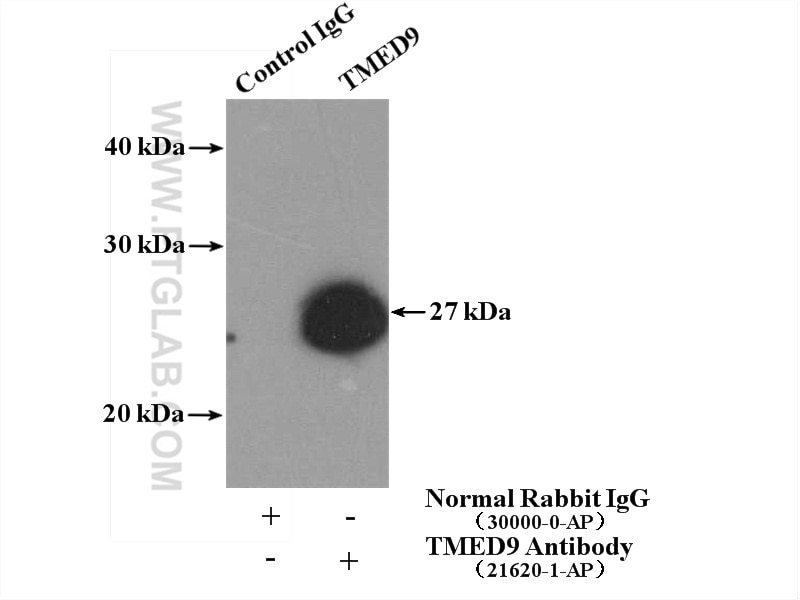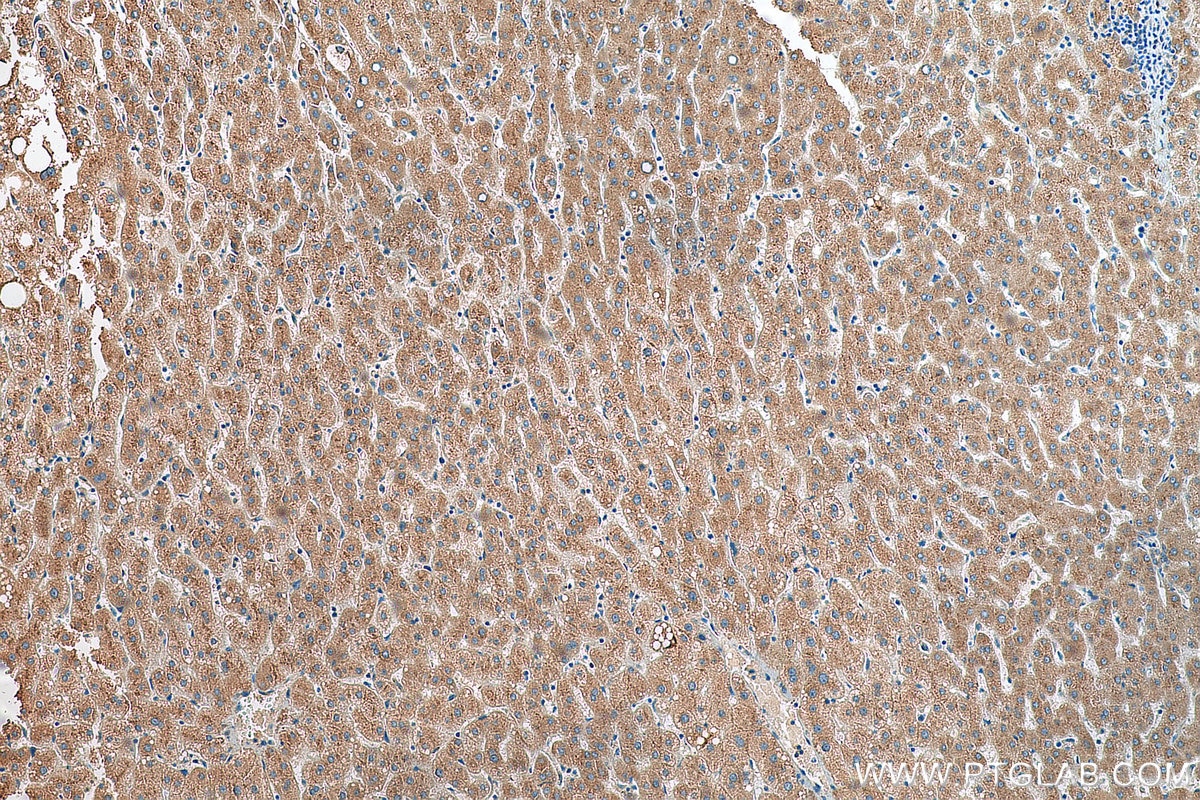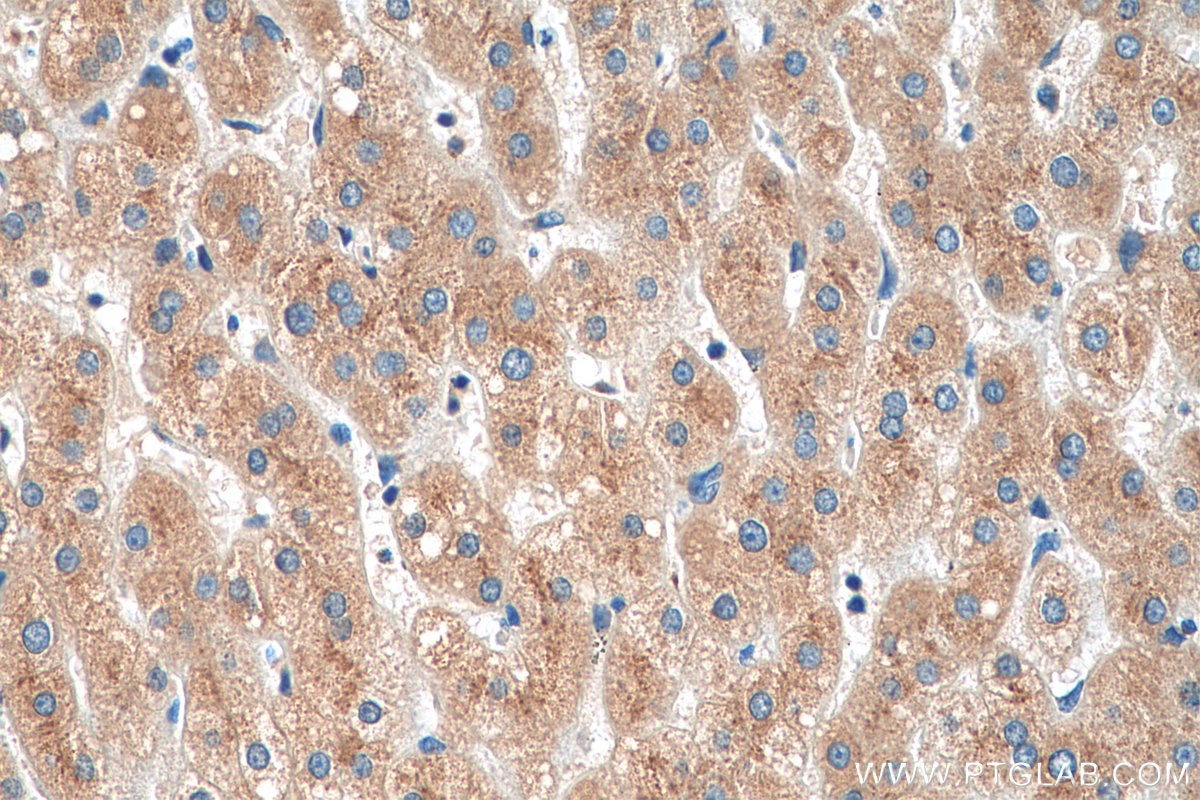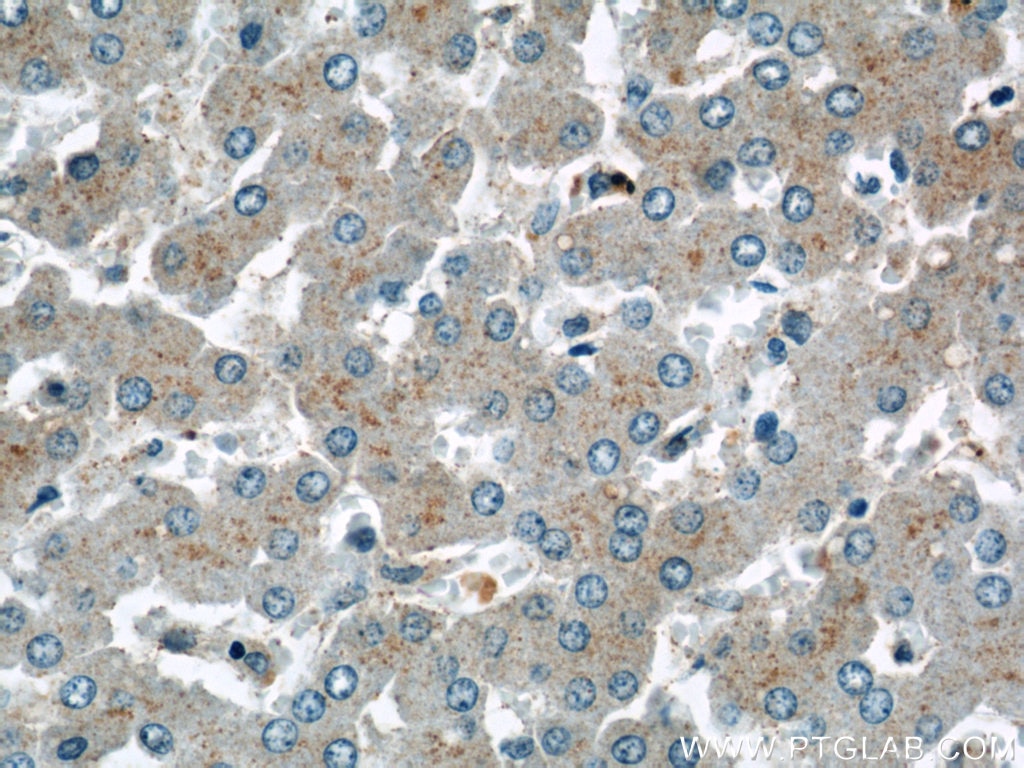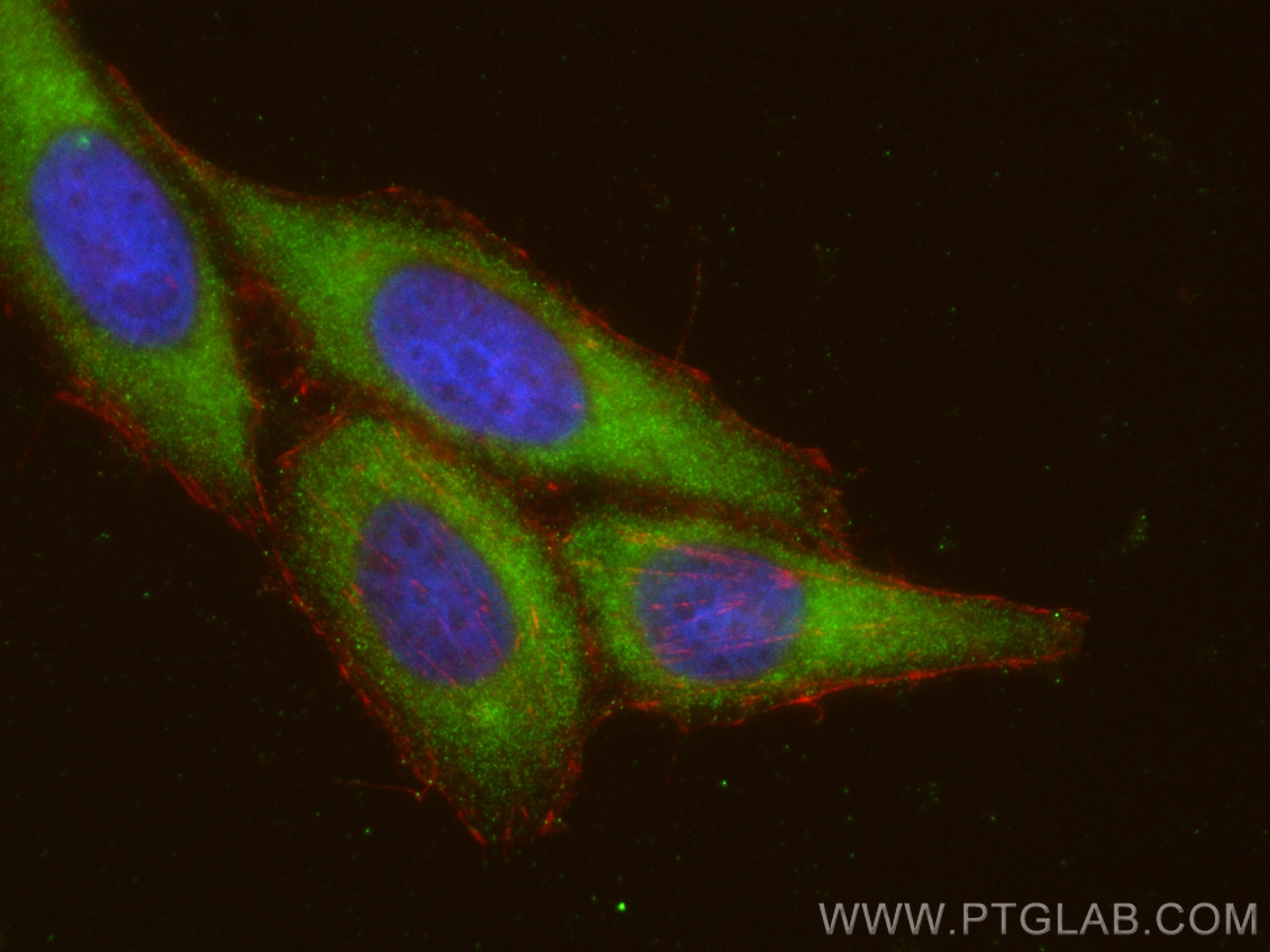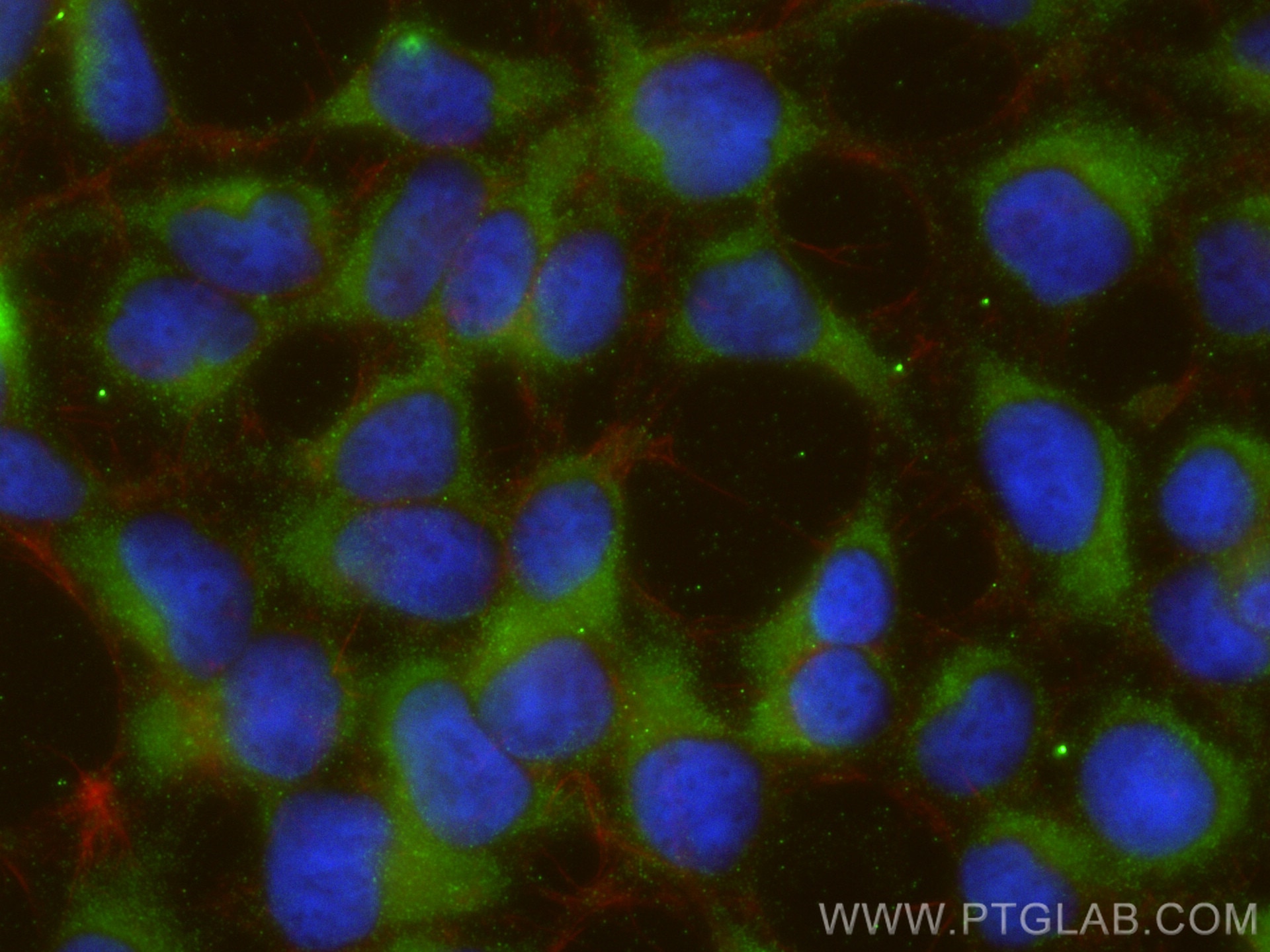- Phare
- Validé par KD/KO
Anticorps Polyclonal de lapin anti-TMED9
TMED9 Polyclonal Antibody for WB, IHC, IF/ICC, IP, ELISA
Hôte / Isotype
Lapin / IgG
Réactivité testée
Humain, porc, rat, souris
Applications
WB, IHC, IF/ICC, IP, CoIP, ELISA
Conjugaison
Non conjugué
N° de cat : 21620-1-AP
Synonymes
Galerie de données de validation
Applications testées
| Résultats positifs en WB | cellules HepG2, cellules L02, tissu cérébral de souris, tissu hépatique de porc, tissu hépatique de rat, tissu hépatique de souris, tissu pancréatique de souris, tissu pulmonaire de souris |
| Résultats positifs en IP | tissu hépatique de souris |
| Résultats positifs en IHC | tissu hépatique humain, il est suggéré de démasquer l'antigène avec un tampon de TE buffer pH 9.0; (*) À défaut, 'le démasquage de l'antigène peut être 'effectué avec un tampon citrate pH 6,0. |
| Résultats positifs en IF/ICC | cellules HepG2, cellules HEK-293 |
Dilution recommandée
| Application | Dilution |
|---|---|
| Western Blot (WB) | WB : 1:1000-1:8000 |
| Immunoprécipitation (IP) | IP : 0.5-4.0 ug for 1.0-3.0 mg of total protein lysate |
| Immunohistochimie (IHC) | IHC : 1:50-1:500 |
| Immunofluorescence (IF)/ICC | IF/ICC : 1:50-1:500 |
| It is recommended that this reagent should be titrated in each testing system to obtain optimal results. | |
| Sample-dependent, check data in validation data gallery | |
Applications publiées
| KD/KO | See 4 publications below |
| WB | See 8 publications below |
| IHC | See 1 publications below |
| IF | See 1 publications below |
| CoIP | See 1 publications below |
Informations sur le produit
21620-1-AP cible TMED9 dans les applications de WB, IHC, IF/ICC, IP, CoIP, ELISA et montre une réactivité avec des échantillons Humain, porc, rat, souris
| Réactivité | Humain, porc, rat, souris |
| Réactivité citée | rat, Humain, souris |
| Hôte / Isotype | Lapin / IgG |
| Clonalité | Polyclonal |
| Type | Anticorps |
| Immunogène | TMED9 Protéine recombinante Ag13813 |
| Nom complet | transmembrane emp24 protein transport domain containing 9 |
| Masse moléculaire calculée | 235 aa, 27 kDa |
| Poids moléculaire observé | 24-27 kDa |
| Numéro d’acquisition GenBank | BC001123 |
| Symbole du gène | TMED9 |
| Identification du gène (NCBI) | 54732 |
| Conjugaison | Non conjugué |
| Forme | Liquide |
| Méthode de purification | Purification par affinité contre l'antigène |
| Tampon de stockage | PBS with 0.02% sodium azide and 50% glycerol |
| Conditions de stockage | Stocker à -20°C. Stable pendant un an après l'expédition. L'aliquotage n'est pas nécessaire pour le stockage à -20oC Les 20ul contiennent 0,1% de BSA. |
Informations générales
TMED9 (also named as GMP25, GP25L2 or p25) is a member of the EMP24/GP25L family. TMED9 probably forms hetero-oligomeric complexes with TMED7 (p27), TMED2 (p24), and TMED10 (p23) (PMID: 10359607). Located in the endoplasmic reticulum and the Golgi, TMED9 appears to be involved in vesicular protein trafficking, mainly in the early secretory pathway (PMID: 9472029; 10359607).
Protocole
| Product Specific Protocols | |
|---|---|
| WB protocol for TMED9 antibody 21620-1-AP | Download protocol |
| IHC protocol for TMED9 antibody 21620-1-AP | Download protocol |
| IF protocol for TMED9 antibody 21620-1-AP | Download protocol |
| IP protocol for TMED9 antibody 21620-1-AP | Download protocol |
| Standard Protocols | |
|---|---|
| Click here to view our Standard Protocols |
Publications
| Species | Application | Title |
|---|---|---|
Cell Small Molecule Targets TMED9 and Promotes Lysosomal Degradation to Reverse Proteinopathy. | ||
Cell A Translocation Pathway for Vesicle-Mediated Unconventional Protein Secretion.
| ||
Cell Res A new type of ERGIC-ERES membrane contact mediated by TMED9 and SEC12 is required for autophagosome biogenesis.
| ||
PLoS Biol TMED9 coordinates the clearance of misfolded GPI-anchored proteins out of the ER and into the Golgi | ||
BMC Biol ACBD3 modulates KDEL receptor interaction with PKA for its trafficking via tubulovesicular carrier. | ||
Mol Biol Cell The p24-family and COPII subunit SEC24C facilitate the clearance of alpha1-antitrypsin Z from the endoplasmic reticulum to lysosomes |
Avis
The reviews below have been submitted by verified Proteintech customers who received an incentive for providing their feedback.
FH Giulia (Verified Customer) (02-29-2024) | Specific antibody that works well in Western blot, both for cells and tissue lysates.
|
